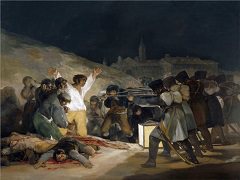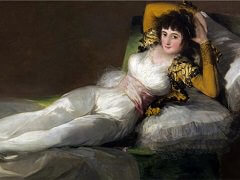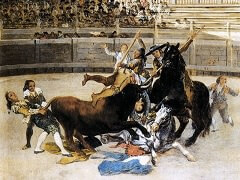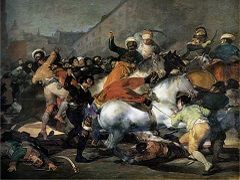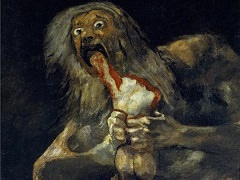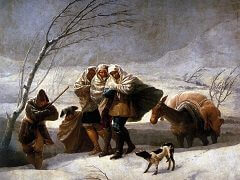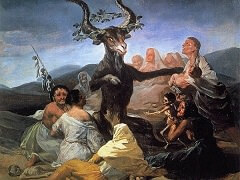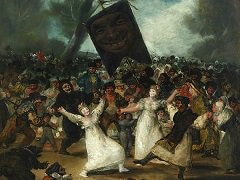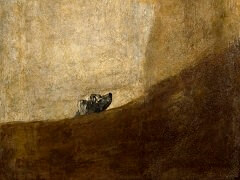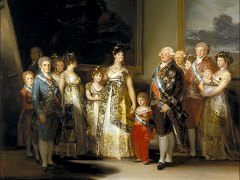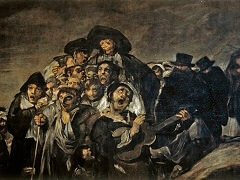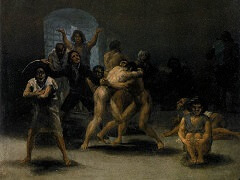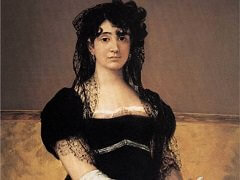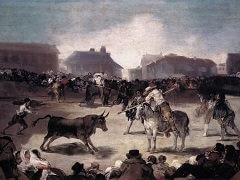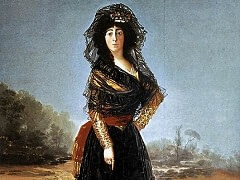The Colossus, 1808-12 by Francisco Goya
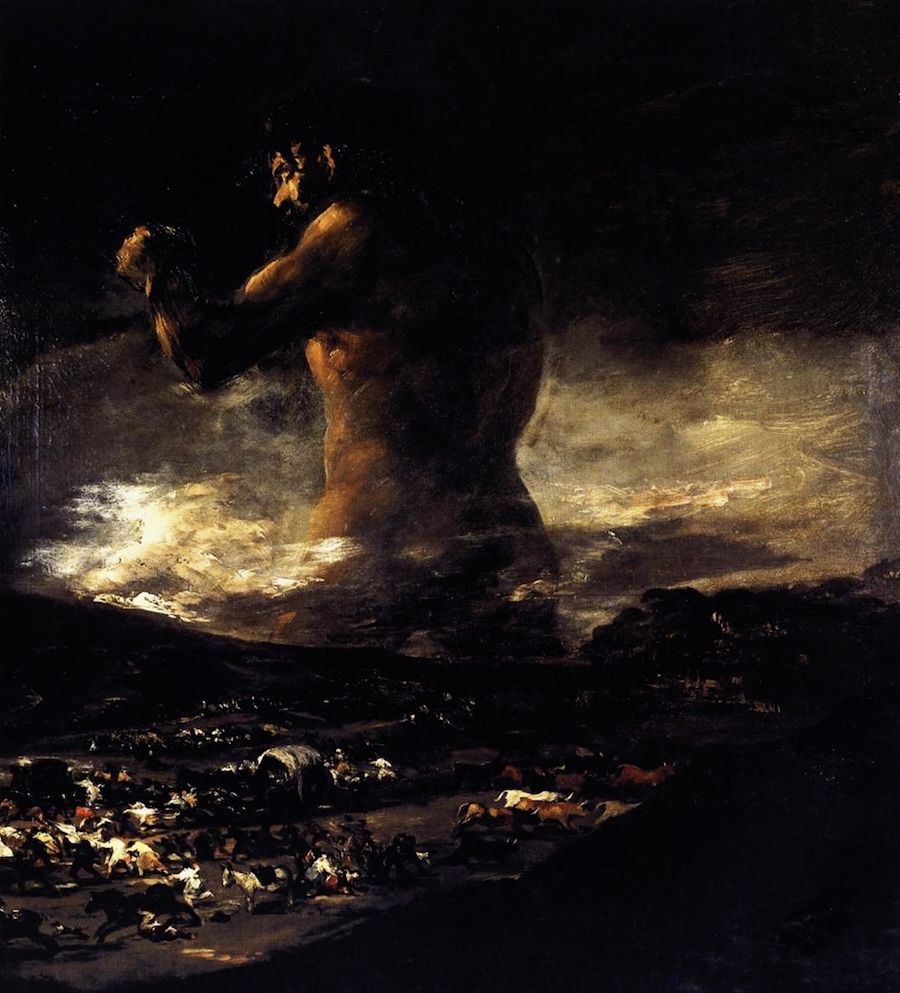
The large body of the giant occupies the centre of the composition. It appears to be adopting a fighting pose due to the position of its one visible arm and its clenched fist. The picture was painted during the Peninsular War so it could be a symbolic representation of that war. Nigel Glendinning states that the picture is based on a patriotic poem written by Juan Bautista Arriaza called Pyrenean Prophecy published in 1810. The poem represents the Spanish people as a giant arising from the Pyrenees in order to oppose the Napoleonic invasion. Goya's painting The Eagle, which was found in the possession of Goya's son in 1836, has a similar size and allegorical character to The Colossus. Glendinning considers that this proves that Goya conceived of paintings with a similar concept to The Colossus.
The giant's posture has been the object of a number of interpretations. It is not clear is it is walking or planted firmly on legs spread apart. The giant's position is also ambiguous, it could be behind the mountains or buried up to above its knees, as is seen in other examples of Goya's Black Paintings such as Fight with Cudgels. The subject's legs are also obscured in Saturn Devouring His Son and the subject is even buried up to its neck (or possibly behind an embankment) in The Dog, which in Spanish is sometimes referred to as Perro Semihundido (Semi-submerged Dog). Some experts have suggested that the giant appears to have his eyes shut, which could represent the idea of blind violence.
In contrast to the erect figure of the giant are the tiny figures in the valley that are fleeing in all directions. The only exception is a donkey that is standing still, Luna has suggested that this figure could represent an incomprehension of the horrors of war.
The technique used in this painting is similar to that used in Goya's Black Paintings, which were originally painted on the walls of Goya's house, Quinta del Sordo. A later date for the painting of the picture has even been suggested, which would mean that the The Colossus mentioned in the inventory of 1812 is a different painting. However, Nigel Glendinning has refuted this later dating with arguments solely based on stylistic features of the painting. Glendinning argues that all the stylistic features found in The Colossus are already present (although not to the same degree) in Goya's previous paintings from The Meadow of San Isidro in 1788, which contains small figures painted with quick strokes; as well as some drawings found in Goya's sketchbooks such as A giant figure on a balcony, A hooded giant and Proclamation Dream of the Witches.

